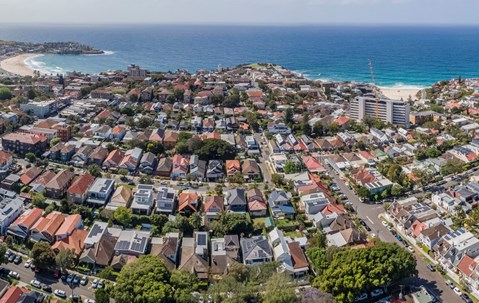News & Tips

It's time to turn the tide on affordability or become a pale imitation of Sydney
It's time for the Victorian Government and planning authorities to get serious about greenfield development in and around Melbourne or wear the consequences of rising prices, increased unaffordability and a shortage of new homes.
The clear and present danger is that we fall into the same trap as our northern neighbours. Our city deserves far more than to become a pale imitation of Sydney, where a generation of young people have given up on the hope of living the great Australian dream.
Together with Quantify Strategic Insights, Oliver Hume recently made a detailed submission to the "Plan for Victoria" process, where we outlined not just the challenges facing Melbourne but highlighted some of the potential solutions.
We already have a good understanding of the many issues facing our city. In simple terms, we have a growing population and a shortage of new homes, which has led to a housing and affordability crisis.
Our detailed submission makes it clear that the easiest and most obvious solution to this crisis is to increase the supply of greenfield land to meet the needs and demands of homebuyers.
Demand Side Realities
New home completions in Melbourne have fallen to the low 40,000 range annually, and this trend is expected to persist in the short to medium term based on current building approvals. This is nowhere near enough to meet demand.
While population growth has dipped in recent years due to COVID, it is expected to surge over the coming years, with an additional 110,000 people calling the city home each year.
As a city, we need to build over 53,000 new dwellings annually just to meet the existing demand. Ideally, we should exceed this target if we want to create the oversupply required to keep prices and affordability in check.
It is worth noting that this target is substantially more than the rate at which we have produced housing in the past, with the annual long-term (pre-COVID) average sitting at about 48,400 dwellings built between 2007 and 2019.
Getting the Balance Right
In addition to the need for more homes, we also need to shift the focus on the type of housing being delivered. The current Plan Melbourne strategy is biased towards Infill/Established area development while minimising the need for Growth Area (Greenfields) supply.
Despite the government's best efforts, buyers have rejected this, with residential development in the Growth Areas consistently exceeding the target of 30% of new dwelling supply. In contrast, the infill and established areas have fallen well below the 70% target outlined in Plan Melbourne.
While demand for greenfield land has increased, the supply via Precinct Structure Plans (PSPs) has slowed considerably. These PSPs were explicitly created to support the development of greenfield land but have become bogged down in red tape and green tape.
Between 2008 and 2018, the rate of PSP-approved land delivery averaged 28,230 lots per annum. However, this has dropped to just 11,570 lots per annum between 2019 and 2024. The delivery of new PSP-approved lots is projected to fall further, with only 42,000 lots expected to be completed by 2030, equating to just under 7,000 lots per year.
With the current supply already under pressure and projected to diminish further, the gap between demand and available land is expected to widen, potentially leading to increased housing affordability issues and strain on infrastructure.
Supply is the answer
Melbournians only need to look to Sydney for the real-world implications of restraining land supply and the impact on affordability.
Sydney's housing market is naturally constrained by national parks, resulting in lower land sales activity and significantly higher land prices than in Melbourne. This is best summed up by the fact that between 2011 and 2024, around 340,000 new houses were approved for construction in Melbourne, compared to just 201,000 in Sydney.
Sydney's median land prices are 83% higher than Melbourne's, highlighting the substantial cost difference. In contrast, Melbourne's more abundant land supply has helped to keep prices relatively lower.
If we want to keep prices lower, the Plan for Victoria process must consider, with some urgency, strategies to increase the supply of greenfield land to a level that matches or exceeds the projected demand from a growing population.
The first priority must be to review and expand the city's Urban Growth Boundary (UGB). These boundaries set up a static perimeter for development independent of what home purchasers want and remain the biggest obstacle to increasing supply.
It is also worth considering a comprehensive revamp of the PSP process to ensure they are pulling their weight in delivering new supply.
Our submission to Plan for Victoria does not purport to provide all the answers to the problems that have led us into the situation Melbourne is in. We only hope to highlight some of the issues that must be addressed to build a sustainable and affordable housing market for current and future generations.
By Julian Coppini
Oliver Hume Real Estate Group
Chief Executive Officer

